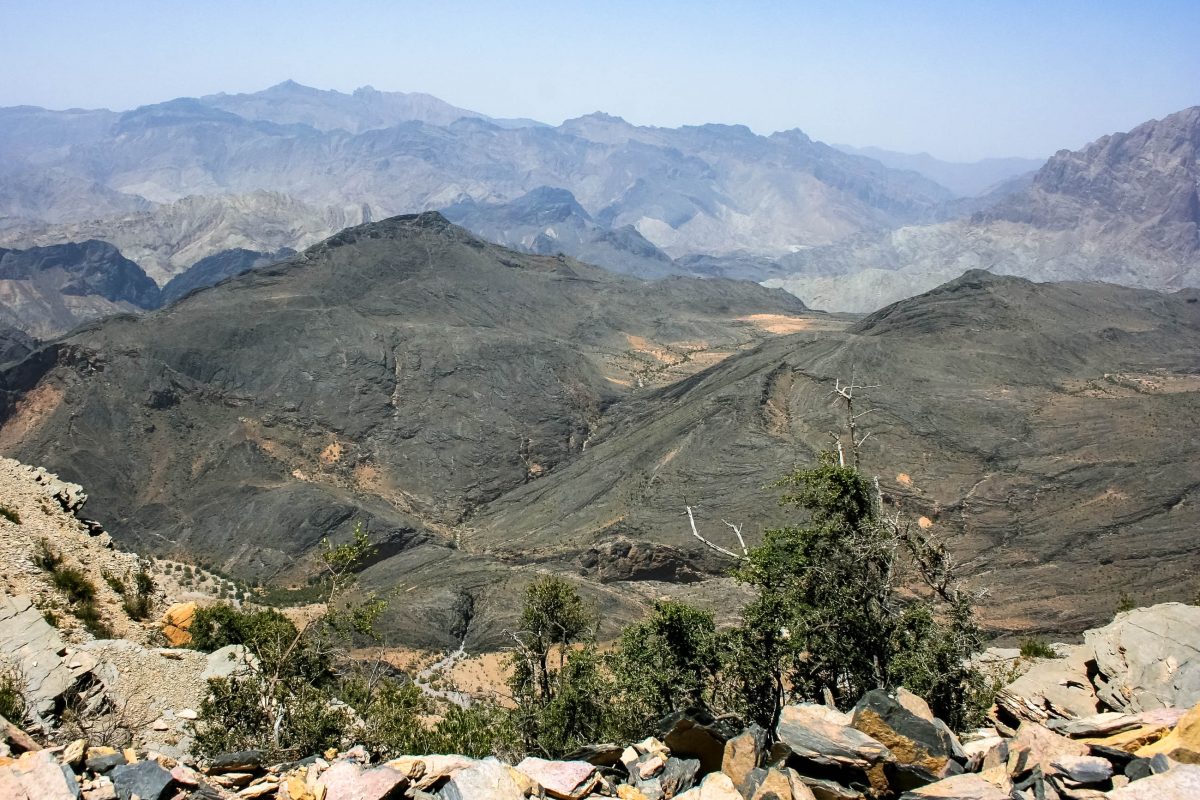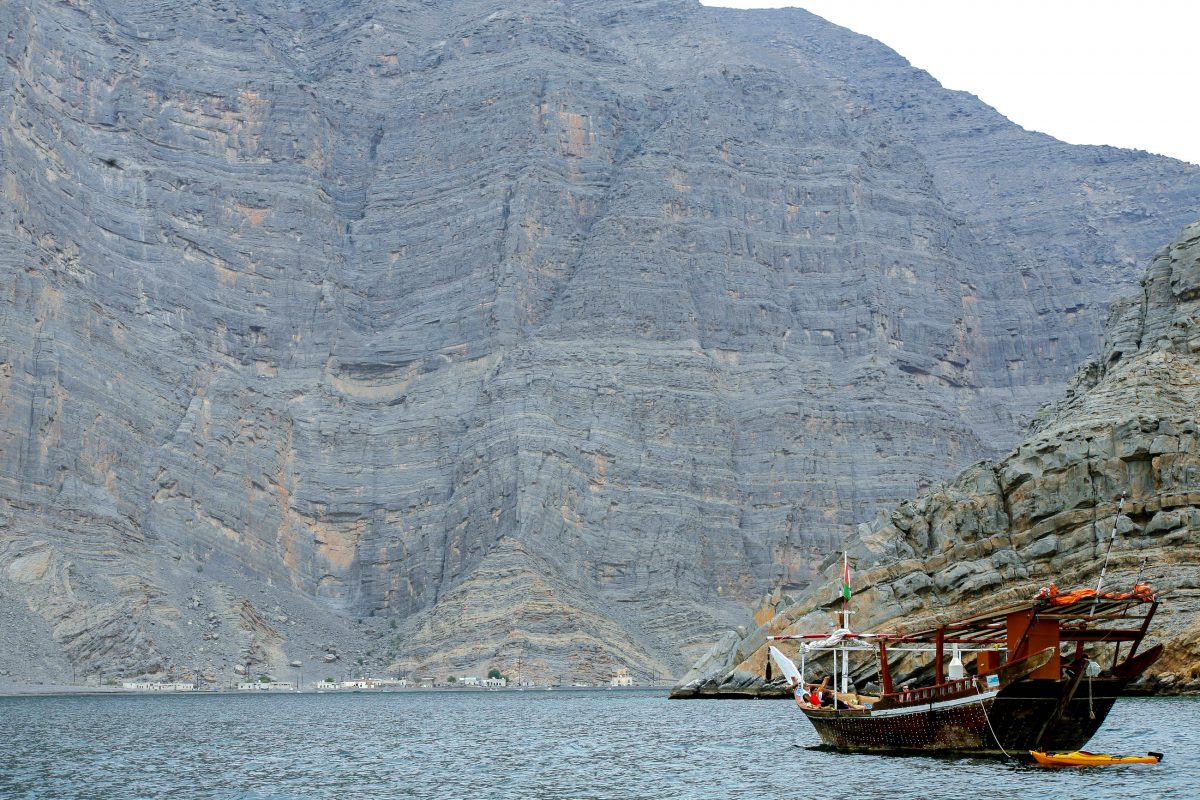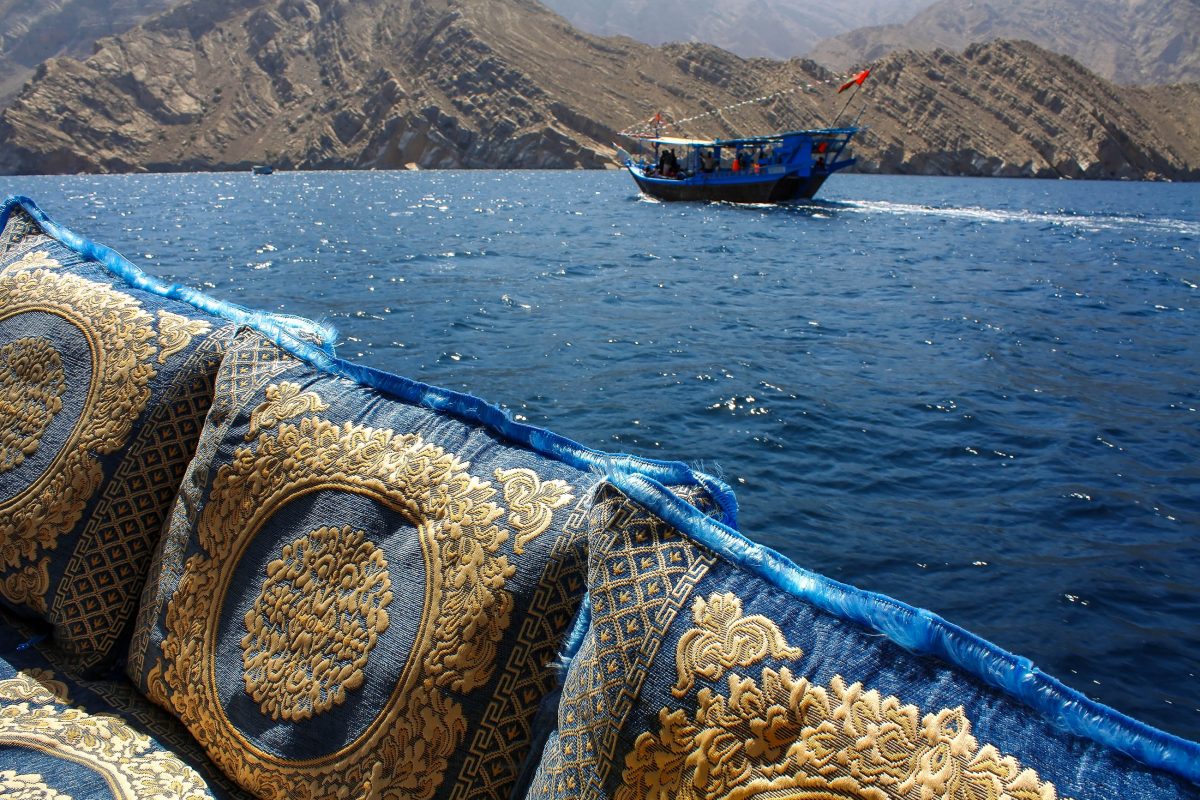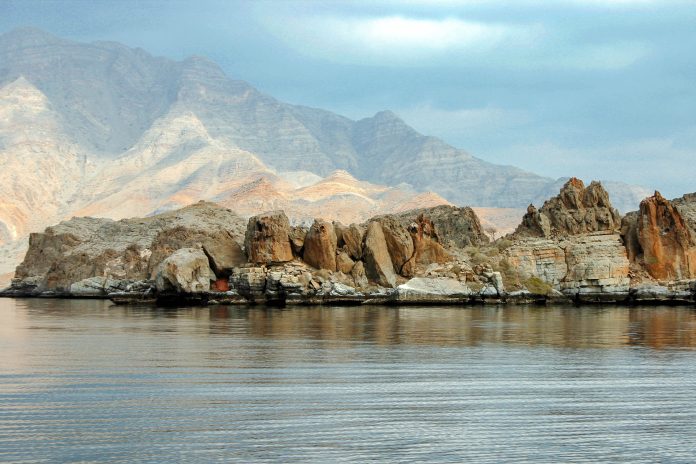Die omanische Exklave Musandam liegt nördlich der Vereinigten Arabischen Emirate. Ihre wilden, unberührten Gipfel, abenteuerlichen Pisten, atemberaubenden Buchten und fantastischen Tauchspots machen eine Reise nach Musandam zu einem unvergesslichen Erlebnis.
An der nördlichsten Spitze der arabischen Halbinsel liegt die omanische Exklave Musandam. Sie ist Teil des Sultanats Oman, jedoch geografisch durch die Vereinigten Arabischen Emirate vom Oman abgeschnitten. Die gesamte Halbinsel Musandam präsentiert sich auf den ersten Blick schroff und lebensfeindlich. Hier ragen die Ausläufer des mächtigen Hajar-Gebirges bis an die Meeresküste heran.
Inhaltsverzeichnis
BILDER: Musandam
Fotogalerie: Halbinsel und Exklave Musandam
Die zerklüftete Küste der Insel spitzt sich im Norden zu einer Vielzahl von kleinen Inseln und fjordähnlichen Buchten zu, die Musandam den Spitznamen „Norwegen Arabiens“ eingebracht haben. Wüstenartiges Klima mit kaum Niederschlägen machen es der Vegetation schwer. Grün findet man in Musandam nur in künstlich bewässerten Oasen. Einige vegetationsreiche Ebenen in der sonst kargen Bergwelt muten dafür richtig paradiesisch an.
Die karge Landschaft war auch der Grund, warum Musandem nie so wirklich ins Interesse der amtierenden Herrscher rückte. Lediglich Sultan Thuwaini bin Said deklarierte Musandam im späten 19. Jahrhundert als Teil des Oman – den Ratschlägen seine britischen Berater folgend, die Musandams strategische Bedeutung für ihr Kolonialreich erkannten.
Doch auch als im Jahr 1970 die Zugehörigkeit von Musandam zum Oman durch ein Grenzabkommen mit den Vereinigten Arabischen Emiraten fixiert wurde, blieb die Halbinsel vom restlichen omanischen Gebiet isoliert.
Musandam wird eigenständig und modernisiert

1979 wurde schließlich Musandams Eigenständigkeit erklärt und die Exklave mit einem eigenen Budget ausgestattet. Ein Jahr später hielten Telefon, Radio und Fernsehen Einzug in Musandam. Außerdem wurde ein Flughafen gebaut, da ansonsten Musandam nur über eine mehrtägige Dhau-Fahrt erreicht werden konnte.
Die etwa 35.000 Einwohner Musandams leben von der Fischerei, der Oasenwirtschaft, dem Import und Export und der Lohnarbeit in großen Städten, wie Musandams Hauptstadt Khasab oder in den Vereinigten Arabischen Emiraten. Seit 1992 gilt auch der Tourismus als Einnahmequelle Musandams, denn zuvor war die gesamte Halbinsel militärisches Sperrgebiet.
Das omanische Militär sicherte hier die Straße von Hormuz für die Durchfahrt von Schiffen aller Nationen der Welt. Die Wasserstraße hat zwar nicht mehr dieselbe Bedeutung wie früher, wird aber dennoch jeden Tag von 20 bis 30 Frachtschiffen durchquert.
Anreise nach Musandam

Die Anreise nach Musandam erfolgt am besten mit dem Flugzeug von Muscat aus. Die kleine Maschine sollte aufgrund der wenigen Sitzplätze früh genug gebucht werden. Seit 2009 verkehrt auch eine Fähre zwischen Muscat und Khasab, die ihre Passagiere nach 6 Stunden ans Ziel bringt.
Tipp: Die beste Aussicht auf die Fjorde hat man, wenn man im Flugzeug von Muscat auf der linken Seite sitzt.
Auf dem Landweg gibt es zwar zwei Straßen, die nach Musandam führen, doch der Weg von Dibba bis zur nächsten Straße ist meist durch das Militär gesperrt. Die andere (auch straßentechnisch einfachere) Strecke führt auf der anderen Seite der Küste über Ras al Khaimah. Auf dieser Straße ist man in nur zwei Stunden in Dubai.
Tipp: Wer mit dem Mietauto durch die VAE fahren möchte, braucht eine Bestätigung des Autovermieters über die VAE-Versicherung. Das Visum ist unter normalen Umständen an der jeweiligen Grenze erhältlich, es kann allerdings zu Wartezeiten von mehreren Stunden kommen.
Beste Reisezeit für Musandam

Die beste Reisezeit für Musandam sind die Herbst- und Wintermonate. Im Sommer klettert das Thermometer nicht selten auf für Europäer ziemlich unerträgliche 50°C und auch die Wassertemperatur liegt über 30°C. Im Februar und März muss man allerdings mit vermehrten Regenschauern rechnen. Die Niederschläge sind zwar kurz, aber heftig und können bestehende Reisepläne im wahrsten Sinne des Wortes ins Wasser fallen lassen.
Unterwegs auf Musandam
Die Halbinsel selbst hat an klassischen Sehenswürdigkeiten nicht viele Highlights zu bieten. Mit dem Auto kommt man überall hin, es gibt jedoch nur wenige Kilometer asphaltierte Straßen. Deshalb gibt es auf Musandam auch mehr Boote als Autos. In etwa drei Tagen hat man die gesamte Enklave gesehen. Unbedingt unternehmen sollte man eine Fahrt in die zerklüftete und großteils völlig menschenleere Bergwelt und eine Tour durch Musandams atemberaubende Fjorde.
Tipp: Vor allem im Winter können auf Musandam zwar seltene, aber heftige Regenschauer niedergehen. Die unüblichen Wassermassen führen zur Unpassierbarkeit vieler Pisten und zur Stornierung von Flügen und Bootsausflügen. Dieses Risiko muss man leider eingehen, wenn man Musandam kennen lernen möchte.





